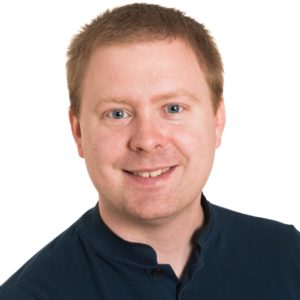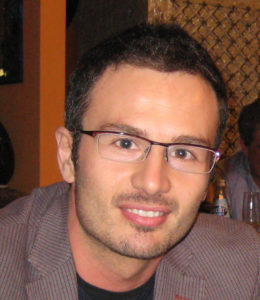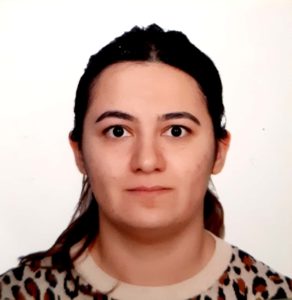T14 Title: User-Centric Cell-Free Massive MIMO: From Foundations to Scalable Implementation
Organizer: Emil Björnson
Organizer: Luca Sanguinetti
Organizer: Özlem Tuğfe Demir
Abstract: Suppose all the antennas that serve the mobile terminals are distributed over the coverage area instead of co-located in arrays at a few elevated locations as in cellular networks. The ideal operation is that each mobile terminal is served by coherent joint transmission and reception from all the neighboring access points. That effectively leads to a so-called “User-Centric Cell-Free Massive MIMO system”. This post-cellular technology has recently attracted much interest from both academia and the industry. Several innovative signal processing and spatial resource allocation algorithms have been developed to make Cell-Free Massive MIMO feasible and practical. Cell-Free Massive MIMO improves the uniformity of the achievable data rates over the coverage area compared to cellular networks. This tutorial starts by giving a background of cellular Massive MIMO in 5G and by identifying the fundamental limits that call for a shift towards the cell-free paradigm. Next, we will introduce the foundations of User-Centric Cell-Free Massive MIMO and explain the benefits of the cell-free operation compared to conventional cellular operation. Signal processing techniques for the operation of User-Centric Cell-Free Massive MIMO will be introduced with a particular emphasis on scalable implementation that guarantees feasible computational complexity and fronthaul in a large network with many mobile terminals. Spatial resource allocation with both optimized and scalable power control algorithms will be provided along with some implementation constraints that possibly lead to the new research problems. The tutorial will be based on a preprint of the presenters’ upcoming textbook on the same topic.
 Bio: Emil Björnson (S’07-M’12-SM’17) is currently a Visiting professor at KTH Royal Institute of Technology, Sweden, and Associate Professor at Linköping University, Sweden. He has authored the textbooks Optimal Resource Allocation in Coordinated Multi-Cell Systems (2013) and Massive MIMO Networks: Spectral, Energy, and Hardware Efficiency (2017). He is dedicated to reproducible research and has made a large amount of simulation code publicly available. He performs research on MIMO communications, radio resource allocation, machine learning for communications, and energy efficiency. Since 2017, he has been on the Editorial Board of the IEEE Transactions on Communications and the IEEE Transactions on Green Communications and Networking since 2016. He has received the 2014 Outstanding Young Researcher Award from IEEE ComSoc EMEA, the 2015 Ingvar Carlsson Award, the 2016 Best Ph.D. Award from EURASIP, the 2018 IEEE Marconi Prize Paper Award in Wireless Communications, the 2019 EURASIP Early Career Award, the 2019 IEEE Communications Society Fred W. Ellersick Prize, and the 2019 IEEE Signal Processing Magazine Best Column Award. He also co-authored papers that received Best Paper Awards at the conferences, including WCSP 2009, the IEEE CAMSAP 2011, the IEEE WCNC 2014, the IEEE ICC 2015, WCSP 2017, and the IEEE SAM 2014.
Bio: Emil Björnson (S’07-M’12-SM’17) is currently a Visiting professor at KTH Royal Institute of Technology, Sweden, and Associate Professor at Linköping University, Sweden. He has authored the textbooks Optimal Resource Allocation in Coordinated Multi-Cell Systems (2013) and Massive MIMO Networks: Spectral, Energy, and Hardware Efficiency (2017). He is dedicated to reproducible research and has made a large amount of simulation code publicly available. He performs research on MIMO communications, radio resource allocation, machine learning for communications, and energy efficiency. Since 2017, he has been on the Editorial Board of the IEEE Transactions on Communications and the IEEE Transactions on Green Communications and Networking since 2016. He has received the 2014 Outstanding Young Researcher Award from IEEE ComSoc EMEA, the 2015 Ingvar Carlsson Award, the 2016 Best Ph.D. Award from EURASIP, the 2018 IEEE Marconi Prize Paper Award in Wireless Communications, the 2019 EURASIP Early Career Award, the 2019 IEEE Communications Society Fred W. Ellersick Prize, and the 2019 IEEE Signal Processing Magazine Best Column Award. He also co-authored papers that received Best Paper Awards at the conferences, including WCSP 2009, the IEEE CAMSAP 2011, the IEEE WCNC 2014, the IEEE ICC 2015, WCSP 2017, and the IEEE SAM 2014.
 Bio: Luca Sanguinetti (SM’15) is currently an Associate Professor with the Dipartimento di Ingegneria dell’Informazione, University of Pisa. He has coauthored the textbook Massive MIMO Networks: Spectral, Energy, and Hardware Efficiency (2017). His expertise and general interests span the areas of communications and signal processing. Dr. Sanguinetti was a recipient of the 2018 Marconi Prize Paper Award in Wireless Communications and coauthored an article that received the Young Best Paper Award from the ComSoc/VTS Italy Section. He was the recipient of the FP7 Marie Curie IEF 2013 “Dense deployments for green cellular networks”. He was also a co-recipient of the two best conference paper awards: IEEE WCNC 2013 and IEEE WCNC 2014. He served as an Associate Editor for the IEEE Transactions on Wireless Communications and the IEEE Journal on Selected Areas of Communications (series on Green Communications and Networking) and as a Lead Guest Editor for the IEEE Journal on Selected Areas of Communications Special Issue on “Game Theory for Networks”. He is currently serving as an Associate Editor for the IEEE Signal Processing Letters, the IEEE Transactions on Communications. He is also a member of the Executive Editorial Committee of the IEEE Transactions on Wireless Communications.
Bio: Luca Sanguinetti (SM’15) is currently an Associate Professor with the Dipartimento di Ingegneria dell’Informazione, University of Pisa. He has coauthored the textbook Massive MIMO Networks: Spectral, Energy, and Hardware Efficiency (2017). His expertise and general interests span the areas of communications and signal processing. Dr. Sanguinetti was a recipient of the 2018 Marconi Prize Paper Award in Wireless Communications and coauthored an article that received the Young Best Paper Award from the ComSoc/VTS Italy Section. He was the recipient of the FP7 Marie Curie IEF 2013 “Dense deployments for green cellular networks”. He was also a co-recipient of the two best conference paper awards: IEEE WCNC 2013 and IEEE WCNC 2014. He served as an Associate Editor for the IEEE Transactions on Wireless Communications and the IEEE Journal on Selected Areas of Communications (series on Green Communications and Networking) and as a Lead Guest Editor for the IEEE Journal on Selected Areas of Communications Special Issue on “Game Theory for Networks”. He is currently serving as an Associate Editor for the IEEE Signal Processing Letters, the IEEE Transactions on Communications. He is also a member of the Executive Editorial Committee of the IEEE Transactions on Wireless Communications.
 Bio: Özlem Tuğfe Demir received the B.S., M.S., and Ph.D. degrees in Electrical and Electronics Engineering from Middle East Technical University, Ankara, Turkey, in 2012, 2014, and 2018, respectively. She is currently a Post-Doctoral Researcher with Linköping University. Her research interests focus on signal processing and optimization in wireless communications, massive MIMO, deep learning, green communications, and multipleantenna technologies for Beyond 5G. She is a recipient of the IEEE SIU 2015 Conference Student Best Paper Award, the Best Thesis Award for M.S. Program and Graduate Courses Performance Award at the Middle East Technical University.
Bio: Özlem Tuğfe Demir received the B.S., M.S., and Ph.D. degrees in Electrical and Electronics Engineering from Middle East Technical University, Ankara, Turkey, in 2012, 2014, and 2018, respectively. She is currently a Post-Doctoral Researcher with Linköping University. Her research interests focus on signal processing and optimization in wireless communications, massive MIMO, deep learning, green communications, and multipleantenna technologies for Beyond 5G. She is a recipient of the IEEE SIU 2015 Conference Student Best Paper Award, the Best Thesis Award for M.S. Program and Graduate Courses Performance Award at the Middle East Technical University.
